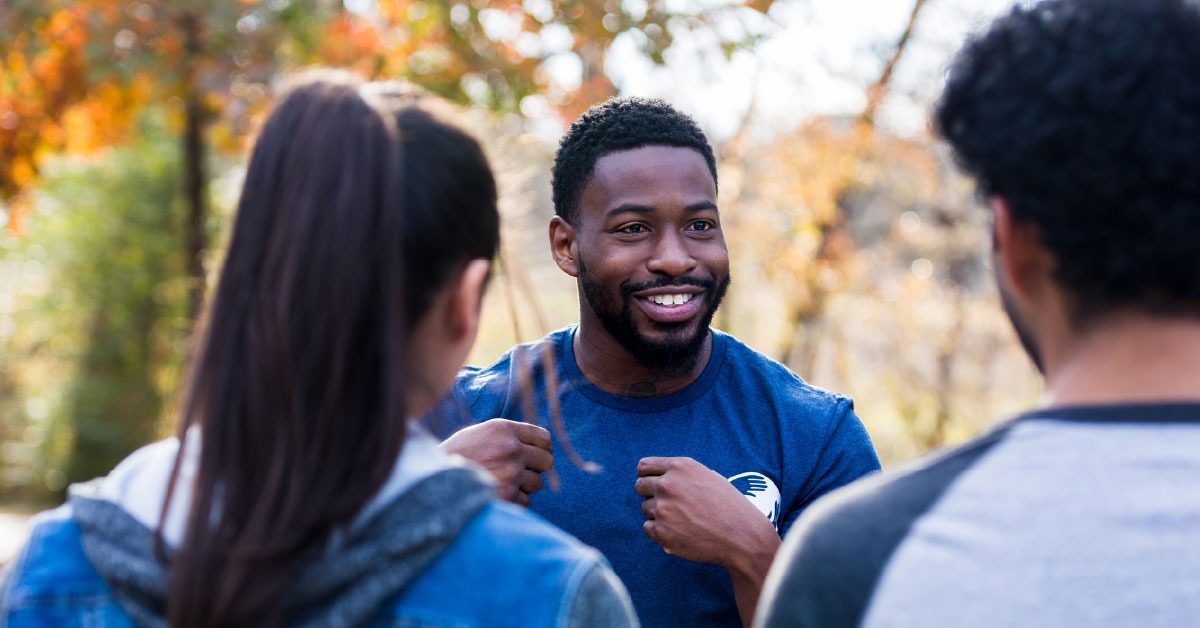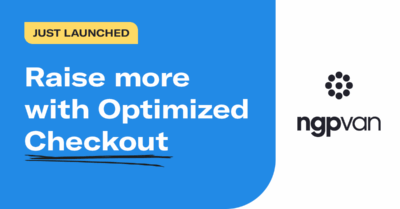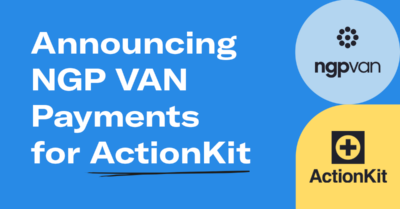What is Deep Canvassing?

Most of the time when people think of political canvassing, they think of volunteers having scripted conversations seeking to persuade voters to support their candidate or cause. While there is certainly value in traditional canvassing, deep canvassing has recently emerged as a new way to foster a more engaging and empathetic conversation with voters. But, what is deep canvassing? And which canvassing method is a better fit for your campaign or cause? We will explore what deep canvassing is, how to conduct it effectively, the distinctions that set it apart from traditional canvassing, the necessary skills for volunteers, and more!
Rooted in the belief that human conversations have the power to change minds and generate action, canvassing generally is the route through which campaigns seek to convince voters to support their campaign or cause. However, deep canvassing is a specialized form of voter engagement that focuses on establishing rapport with voters, prioritizing active listening, and creating a safe space for more meaningful conversations with voters. Rather than starting a conversation with a simple candidate or issue identification question, deep canvassing conversations often revolve around open-ended questions that lead to more complex and nuanced conversations.
Deep canvassing originated in the issue advocacy space, specifically for LGBTQ+ causes in the early 2000s. Instead of focusing explicitly on electoral wins like traditional canvassing usually does, deep canvassing helps build the foundation for long-term transformative change for different issues and causes. The ultimate goal of deep canvassing conversations is to build a sincere relationship with voters by listening and understanding their values, beliefs, and experiences rather than just seeking to gather data through short conversations.
How is Deep Canvassing Different from Traditional Canvassing?
Tactically, deep canvassing is similar to traditional canvassing. You will typically start with a targeted list of voters, knock on those doors, and have conversations with voters that are then noted in a centralized voter database. However, deep canvassing differs from traditional canvassing in a few ways.
- Deep canvassing focuses on developing meaningful relationships with voters and committing to long-term transformative change. Traditional canvassing typically seeks to gather information quickly and move to the next door.
- Deep canvassing conversations usually last significantly longer than traditional canvassing conversations.
- Whereas traditional canvassing asks more specific questions to gather data (like identifying who a voter plans to support in the upcoming election), deep canvassing asks open-ended questions that seek to understand voters’ values, beliefs, and experiences.
Both canvassing methods are valuable ways to engage voters, but they have different goals. In addition to canvassing efforts, distributed canvassing will also be valuable when streamlining the turf-cutting process and save you time. Ultimately, it’s up to your campaign or cause to determine which of these methods is best depending on the size of your volunteer program, the number of voters you may need to talk to or persuade, and the goals of your campaign or cause. Now let’s discuss how to execute a deep canvassing program if you choose to create one.
How to Deep Canvass
Before you or your volunteers head out to knock on doors, you’ll want to understand the basic principles of deep canvassing: establishing rapport, listening actively, sharing relatable stories, and building meaningful relationships. Each of these principles is necessary to deep canvass effectively as it shifts the transactional nature of traditional canvassing (e.g., who someone is voting for) to a transformational one (e.g., what issues are impacting you daily).
In its execution, deep canvassing is fairly similar to traditional canvassing as we noted earlier. You still knock targeted lists of voters and engage with them, but the nature of your conversations are focused on more open-ended questions that build rapport and allow you to actively listen to those voters. Fully concentrating on what a voter is saying, leaving space for a voter to pause and think before responding (without immediately jumping in to fill the silence), asking follow-up questions, and displaying engaged body language are all important listening techniques that create more meaningful conversations and build rapport on the doors. If a voter spends more time talking during a conversation than a canvasser does, you’re doing it right!
At the same time, having political conversations means that sometimes tough issues will come up. You and your volunteers should be able to engage in those conversations and ask open-ended questions to find shared values with those voters. Then, you can frame those difficult conversations through those shared values to more effectively engage with voters and have a more meaningful discussion. Sharing personal stories and experiences may also help relate to voters or present a view they may not have considered before, hopefully leading to a more significant conversation that the voter will remember in the future.
As you finish your conversation with a voter, you’ll add any relevant information or notes to your voter file solution or voter database, and head to the next house. In order to have an effective deep canvassing program for your campaign, it’s typically best to host training to discuss the basic principles of deep canvassing and how to address the tough conversations that may arise on the doors. It’s also great to run through a few role-playing scenarios to help your volunteers gain confidence and feel more comfortable before heading out to knock on doors.
Deep Canvassing Training
Deep canvassing training is critical for successful deep canvassing programs. By sharing the basic principles of deep canvassing with volunteers, you set the standard of what conversations should look like with voters. Without discussing these basic principles, volunteers may not build the relationships you’re hoping they will develop with voters. Your volunteers should also understand the issues they will be discussing with voters so they can have more nuanced conversations. It’s best to provide information and guidance on how to discuss relevant issues and how to handle objections if they arise by finding and framing the discussion through shared values. Lastly, engaging in role-playing exercises may make it easier for your volunteers to navigate challenging situations with voters and build confidence in their ability to speak about the campaign or cause and how it relates to those voters’ views.
Challenges to Deep Canvassing
While there are many benefits to deep canvassing, there are also several challenges that should be addressed before you decide whether to employ this canvassing method for your campaign.
Time-Intensive Conversations
Deep canvassing conversations typically last much longer than traditional canvassing conversations. These conversations usually last between 10 and 20 minutes, whereas traditional canvassing conversations are usually less than five minutes long. This difference is due to the depth and complexity of conversations completed during deep canvassing, whereas traditional canvassing seeks to gather data quickly and move on to the next door. However, if you’re in an especially large district, deep canvassing may be too time-intensive to employ if you don’t have a large volunteer program.
Scalability of a Deep Canvassing Program
The scalability of deep canvassing programs can also be a challenge. Many campaigns and causes must knock on thousands (or tens of thousands) of doors every election cycle. Because of the time-intensive nature of deep canvassing conversations, it can sometimes be difficult to scale deep canvassing without a significant volunteer program.
Emotional Toll on Volunteers
Due to the nature of political conversations, emotions can quickly change at each door. While this is a challenge in traditional canvassing as well, conversations in deep canvassing can sometimes spur particularly strong emotions from voters and volunteers because of the depth of discussion. Hearing or sharing personal stories about hardship or deeply-held beliefs over a period of time can be emotionally draining, so it’s important to discuss the emotional toll when deciding what canvassing method makes the most sense for your campaign or cause.
Now that we’ve shared a few of the challenges of deep canvassing, let’s discuss the skills your volunteers must have to effectively deep canvass.
Skills Volunteers Must Have for Deep Canvassing
While there are many skills volunteers should have to canvass generally, here are the most important ones for deep canvassing.
Patience
Deep canvassing requires a lot of time, effort, and patience. Not just in the initial conversations with voters, but also in the long-term engagement with voters to develop meaningful relationships to create change.
Flexibility
You may find similarities between deep canvassing discussions, but you will need to adapt to different situations during conversations frequently. Each voter will have a unique personality and communication style, and volunteers who adapt to those will likely have more productive and organic conversations.
Conflict Resolution
Finding common ground with someone who may not agree with everything you say is an integral part of deep canvassing. Respectfully resolving conflicts with voters is another way that volunteers can contribute to transformative change that deep canvassing can create.
Deep Canvassing Technology
Regardless of which canvassing method you choose to use for your campaign, NGP VAN has a full suite of campaign management tools that can help you achieve your goals. From our voter file solutions like Votebuilder and SmartVAN to our mobile canvassing app, MiniVAN, we’ve got the tools you need to set your campaign up for success! Schedule a demo today to see our tools in action!



